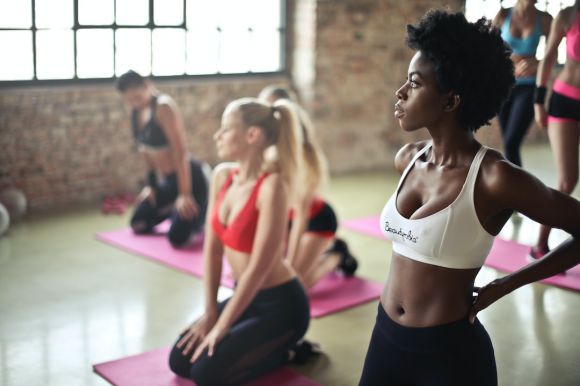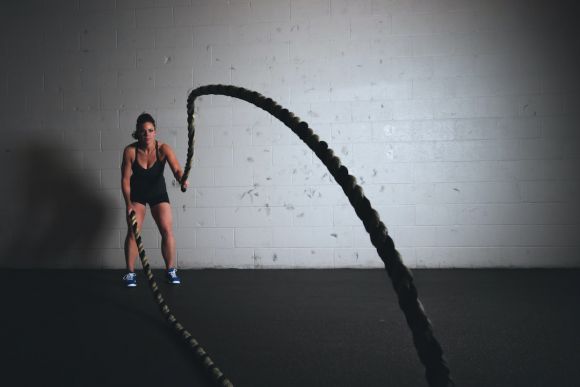Cardiovascular exercises, also known as cardio exercises or simply cardio, are widely recognized as an essential part of any fitness routine. They are great for improving cardiovascular health, burning calories, and promoting weight loss. However, many people are unsure about how frequently they should be incorporating cardio into their exercise regimen in order to achieve optimal results. In this article, we will delve into this important question and provide some guidance on the ideal frequency for doing cardio exercises.
Cardiovascular exercises
Exercise is an essential part of maintaining a healthy lifestyle. It not only helps in weight management but also plays a significant role in keeping our hearts strong and healthy. Cardiovascular exercises, also known as aerobic exercises, are particularly effective in improving cardiovascular health and offer a wide range of benefits. Let's explore some of these benefits in detail.
Increased Heart Strength
One of the most significant benefits of cardiovascular exercises is the strengthening of the heart muscle. Regular aerobic workouts help to improve the efficiency of the heart by making it stronger. When you engage in activities such as running, swimming, or cycling, your heart pumps more blood, which helps to increase the strength and size of the heart muscles. This, in turn, improves your overall cardiovascular health and reduces the risk of heart disease.Improved Stamina and Endurance
Cardiovascular exercises also help to improve stamina and endurance levels. When you perform aerobic exercises regularly, your body adapts to the increased demand for oxygen and energy. This leads to improved lung capacity and enhanced oxygen delivery to the muscles, which allows you to exercise for longer periods without getting tired easily. Improved stamina and endurance not only benefit your exercise routine but also make daily activities easier to manage.Weight Management and Fat Loss
Cardiovascular exercises are an effective way to manage weight and burn excess fat. These exercises increase your heart rate, which helps to boost metabolism and burn calories. When combined with a healthy diet, regular aerobic workouts can contribute to weight loss by creating a calorie deficit. Additionally, cardiovascular exercises help to reduce belly fat, which is associated with an increased risk of heart disease and other health conditions.Reduced Risk of Chronic Diseases
Engaging in regular cardiovascular exercises can significantly reduce the risk of chronic diseases such as heart disease, stroke, and diabetes. These exercises improve blood circulation and lower blood pressure, reducing the strain on the heart and blood vessels. They also help to improve cholesterol levels by increasing the levels of high-density lipoprotein (HDL) or "good" cholesterol and decreasing the levels of low-density lipoprotein (LDL) or "bad" cholesterol. By reducing the risk of chronic diseases, cardiovascular exercises contribute to a longer and healthier life.Mental Health Benefits
Cardiovascular exercises not only benefit physical health but also have positive effects on mental health. When you engage in aerobic exercises, your body releases endorphins, which are known as "feel-good" hormones. These hormones help to reduce stress, anxiety, and depression, promoting a positive mood and overall mental well-being. Regular aerobic workouts can also improve sleep quality, boost self-esteem, and enhance cognitive function.Improved Energy Levels
Regular cardiovascular exercises help to increase energy levels by improving blood circulation and oxygen supply throughout the body. When you engage in aerobic activities, your body becomes more efficient at utilizing oxygen and nutrients, which leads to increased energy production. Improved energy levels not only make daily tasks more manageable but also enhance athletic performance, allowing you to push harder and achieve better results in your workouts. In conclusion, cardiovascular exercises offer a multitude of benefits for both physical and mental health. They strengthen the heart, improve stamina and endurance, aid in weight management, reduce the risk of chronic diseases, boost mental health, and increase energy levels. By incorporating regular aerobic workouts into your routine, you can enjoy these benefits and lead a healthier, happier life. So, lace up your sneakers, hit the gym, or head out for a jog, and start reaping the rewards of cardiovascular exercises today.
High blood pressure, also known as hypertension, is a common health problem that affects millions of people worldwide. If left untreated, it can lead to serious complications such as heart disease and stroke. One effective way to manage high blood pressure is through regular cardiovascular exercise. In this article, we will explore the benefits of cardiovascular exercise in reducing high blood pressure and discuss some of the best exercises to incorporate into your fitness routine.
Understanding High Blood Pressure
Before delving into the world of cardiovascular exercise, it's important to understand what high blood pressure is and how it affects your body. High blood pressure occurs when the force of blood against the walls of your arteries is consistently too high. This can lead to damage to your blood vessels and organs, putting you at risk for heart disease, stroke, and other health problems.The Benefits of Cardiovascular Exercise
Engaging in regular cardiovascular exercise has numerous benefits for your overall health, including the ability to reduce high blood pressure. When you engage in aerobic activities, your heart rate increases, which strengthens your heart and improves its ability to pump blood. This, in turn, helps to lower your blood pressure over time.Best Cardiovascular Exercises for High Blood Pressure
1. Walking: Walking is a simple yet effective exercise that can be done by people of all fitness levels. Aim for at least 30 minutes of brisk walking most days of the week to reap the blood pressure-lowering benefits. 2. Swimming: Swimming is a low-impact exercise that is gentle on the joints while providing a great cardiovascular workout. Whether you choose to swim laps or participate in a water aerobics class, swimming can help lower your blood pressure. 3. Cycling: Cycling is an excellent way to get your heart pumping and your blood flowing. Whether you prefer outdoor cycling or using a stationary bike, aim for at least 30 minutes of moderate-intensity cycling several times a week. 4. Dancing: Dancing is not only a fun way to move your body, but it also helps improve cardiovascular fitness. Whether you join a dance class or simply dance around your living room, make sure to choose vigorous dance styles to get the most benefits. 5. High-Intensity Interval Training (HIIT): HIIT workouts consist of short bursts of intense exercise followed by periods of rest. These workouts are particularly effective at lowering blood pressure and improving overall cardiovascular health.Incorporating Cardiovascular Exercise into Your Routine
To effectively reduce high blood pressure, it's important to make cardiovascular exercise a regular part of your routine. Start by setting realistic goals and gradually increasing the duration and intensity of your workouts. Remember to warm up before each session and cool down afterward to prevent injury. Additionally, it's crucial to listen to your body and consult with a healthcare professional if you have any underlying health conditions or concerns.Conclusion
Regular cardiovascular exercise is a powerful tool in managing and reducing high blood pressure. By incorporating activities such as walking, swimming, cycling, dancing, and HIIT into your fitness routine, you can improve your cardiovascular health and lower your blood pressure. Remember to start slowly, set realistic goals, and always prioritize your safety and well-being. With consistency and dedication, you can take control of your blood pressure and enjoy a healthier, happier life.
Cardiovascular exercises are an essential component of any fitness routine. They help improve heart health, increase endurance, and burn calories. However, not everyone is at the same fitness level, and it's important to modify cardio exercises to suit individual needs. Whether you're a beginner or an advanced athlete, here are some tips on how to modify cardio exercises for different fitness levels.
Start Slow and Gradually Increase Intensity
If you're new to cardio exercises or haven't been active for a while, it's crucial to start slow and gradually increase the intensity. This allows your body to adjust and prevents injuries. Begin with low-impact exercises such as walking, swimming, or cycling at a comfortable pace. As your fitness level improves, you can gradually increase the duration and intensity of your workouts.Modify Intervals
Interval training is an effective way to boost cardiovascular fitness. It involves alternating between high-intensity exercises and periods of rest or low intensity. Beginners can start with shorter intervals and longer rest periods. For example, you can sprint for 30 seconds and then walk or jog for 1-2 minutes. As you progress, you can decrease the rest time and increase the intensity of the high-intensity intervals.Increase Resistance or Incline
If you're looking to challenge yourself and improve your cardiovascular fitness, consider adding resistance or incline to your cardio exercises. For instance, if you're using a stationary bike, increase the resistance level. This will make your muscles work harder and increase the intensity of your workout. Similarly, if you're walking or running on a treadmill, try increasing the incline to simulate uphill terrain.Incorporate High-Intensity Interval Training (HIIT)
High-Intensity Interval Training (HIIT) is a popular and efficient way to improve cardiovascular fitness. It involves short bursts of intense exercise followed by short recovery periods. HIIT workouts can be modified to suit different fitness levels. Beginners can start with lower intensity exercises and longer rest periods, while advanced individuals can increase the intensity and decrease the rest time. HIIT workouts can be done with various exercises such as sprinting, burpees, jumping jacks, or mountain climbers.Consider Low-Impact Options
Not everyone can engage in high-impact cardio exercises due to joint issues or injuries. Fortunately, there are plenty of low-impact options that still provide an effective cardiovascular workout. These include swimming, cycling, using an elliptical machine, or even dancing. Low-impact exercises are gentler on the joints but still provide the benefits of cardio workouts. Remember to listen to your body and choose exercises that are comfortable and enjoyable for you.Seek Professional Guidance
If you're unsure about how to modify cardio exercises for your fitness level, it's always a good idea to seek guidance from a fitness professional. They can assess your current fitness level, help you set realistic goals, and design a personalized workout plan that suits your needs. A fitness professional can also provide proper form and technique guidance to prevent injuries and maximize the benefits of your cardio workouts.Conclusion: Tailoring Cardio Exercises to Your Fitness Level
Cardio exercises are a crucial part of any fitness routine, but they should be modified to suit individual fitness levels. By starting slow, gradually increasing intensity, modifying intervals, incorporating resistance or incline, trying HIIT workouts, considering low-impact options, and seeking professional guidance, you can tailor your cardio exercises to your specific needs and goals. Remember, consistency is key, so find activities you enjoy and make cardio exercises a regular part of your fitness routine.
Maintaining a healthy and active lifestyle is essential for overall well-being. One of the best ways to achieve this is through regular cardiovascular exercise, also known as cardio. Cardio exercises not only help in improving heart health but also aid in weight loss, reducing stress, boosting mood, and increasing stamina. In this article, we will explore some effective cardio exercises that can be incorporated into your fitness routine.
Running: The Classic Cardio Workout
Running is a timeless and effective cardio exercise that requires no special equipment. It helps in burning calories, improving cardiovascular health, and strengthening muscles. Whether you prefer running outdoors or on a treadmill, it is important to start with a warm-up to prevent injuries. Begin with a brisk walk and gradually increase your pace to a jog or run. Aim to run for at least 30 minutes, three to four times a week, to reap the maximum benefits.Cycling: Pedal Your Way to Fitness
Cycling is another excellent cardio exercise that can be enjoyed by people of all ages. It can be done outdoors on a bicycle or indoors on a stationary bike. Cycling engages the major muscles of the lower body, including the quadriceps, hamstrings, and glutes. It is a low-impact exercise that reduces stress on the joints while providing a great cardiovascular workout. Aim for a minimum of 150 minutes of moderate-intensity cycling per week to improve your endurance and stamina.Swimming: Dive Into Fitness
Swimming is a full-body workout that not only provides cardio benefits but also tones muscles and improves flexibility. It is a low-impact exercise that is gentle on the joints, making it suitable for people with joint pain or injuries. Swimming engages the muscles of the arms, legs, and core, while also working the cardiovascular system. Whether you choose to swim laps, participate in water aerobics, or simply splash around, aim for at least 150 minutes of moderate-intensity swimming per week.Jumping Rope: Fun and Effective
Jumping rope may seem like a childhood pastime, but it is actually a highly effective cardio exercise. It engages the entire body, especially the calves, shoulders, and core. Jumping rope not only burns a significant amount of calories but also improves coordination and agility. Start with short intervals of 1-2 minutes and gradually increase the duration as you build stamina. Aim for at least 20-30 minutes of jumping rope, three to four times a week, to achieve optimal results.HIIT: High-Intensity Interval Training
High-Intensity Interval Training, or HIIT, is a time-efficient cardio workout that alternates between short bursts of intense exercise and brief recovery periods. HIIT exercises can include a combination of bodyweight exercises, such as burpees, squat jumps, and mountain climbers. This type of workout elevates the heart rate quickly, burns calories, and boosts metabolism. Aim for at least 20-30 minutes of HIIT workouts, two to three times a week, for maximum benefits.Incorporate Cardio into Your Routine
Incorporating cardio exercises into your fitness routine is crucial for maintaining a healthy and active lifestyle. Choose activities that you enjoy and vary your workouts to keep yourself motivated. Remember to start with a warm-up and gradually increase the intensity and duration of your workouts. Whether you choose running, cycling, swimming, jumping rope, or HIIT, regular cardio exercise will help you stay fit, improve your heart health, and enhance your overall well-being. So lace up your shoes, grab your bicycle, or head to the pool, and get ready to embrace the benefits of cardio for a healthier and more active lifestyle.
Staying active and maintaining a healthy lifestyle is important for overall well-being. However, finding time to go to the gym or engage in outdoor activities may not always be feasible. Luckily, there are several effective cardio exercises you can do in the comfort of your own home. By incorporating these exercises into your routine, you can improve your cardiovascular fitness and burn calories without the need for expensive equipment or a gym membership.
Jumping Jacks: A Classic Cardio Exercise
Jumping jacks are a classic cardio exercise that can be done anywhere. They are simple yet effective at raising your heart rate and engaging multiple muscle groups. To perform a jumping jack, start by standing with your feet together and arms at your sides. Jump up while simultaneously spreading your legs shoulder-width apart and raising your arms above your head. Then, quickly jump back to the starting position. Repeat this motion for a set amount of time or a desired number of repetitions.High Knees: Engage Your Core and Boost Your Heart Rate
High knees are a great cardio exercise that not only raises your heart rate but also engages your core muscles. To perform high knees, stand with your feet hip-width apart. Lift your right knee towards your chest while simultaneously bringing your left arm forward. Quickly switch sides, bringing your left knee towards your chest and your right arm forward. Continue this alternating motion, lifting your knees as high as possible while keeping a brisk pace.Burpees: A Full-Body Exercise for Cardiovascular Conditioning
Burpees are a challenging yet effective full-body exercise that targets multiple muscle groups while providing a cardiovascular workout. To do a burpee, start in a standing position. Then, squat down and place your hands on the floor in front of you. Kick your legs back into a push-up position and perform a push-up. Jump your feet back towards your hands and explosively jump up, reaching your arms towards the ceiling. Land softly and repeat the entire sequence for a set amount of time or repetitions.Mountain Climbers: Build Endurance and Core Strength
Mountain climbers are a dynamic exercise that targets your core, upper body, and lower body while elevating your heart rate. Begin in a high plank position with your hands directly under your shoulders and your body in a straight line. Bring your right knee towards your chest, then quickly switch legs, bringing your left knee towards your chest while extending your right leg back. Continue alternating your legs in a running motion, keeping a steady pace.Jump Rope: A Fun and Effective Cardio Exercise
Jumping rope is a fun and effective cardio exercise that can be done indoors. Not only does it improve cardiovascular fitness, but it also enhances coordination and agility. Start by finding a suitable space with enough clearance above your head. Hold the handles of the jump rope and position it behind you. Swing the rope over your head and jump over it as it approaches your feet. Try to maintain a steady rhythm and gradually increase your speed as you become more comfortable. Incorporate these exercises into your daily routine to make your workouts more efficient and convenient. Remember to warm up before starting any exercise and listen to your body to avoid overexertion. With consistent effort and dedication, you can improve your cardiovascular fitness and achieve your health and fitness goals right from the comfort of your own home. Stay active, stay healthy!
Pregnancy is a beautiful and transformative time in a woman's life. However, it can also bring about physical changes that may make exercise seem challenging. It is important for pregnant women to maintain their fitness and overall health during this period. Similarly, postpartum recovery requires special attention to rebuilding strength and stamina. Engaging in cardio exercises can be an effective way to achieve these goals. In this article, we will explore the benefits of cardio exercises for pregnant women and postpartum recovery.
Benefits of Cardio Exercises during Pregnancy
1. Increased Energy Levels: Pregnancy can often leave women feeling tired and fatigued. Engaging in regular cardio exercises can help boost energy levels by improving blood circulation and enhancing oxygen flow to the muscles. 2. Improved Cardiovascular Health: Cardio exercises such as brisk walking, swimming, and stationary cycling can improve heart health, leading to better overall cardiovascular fitness. This is especially important during pregnancy, as the heart has to work harder to support both the mother and the growing fetus. 3. Weight Management: Pregnancy is a time when weight gain is expected. However, excessive weight gain can lead to complications for both the mother and the baby. Cardio exercises can help manage weight gain by burning calories and maintaining a healthy body mass index (BMI). 4. Reduced Risk of Gestational Diabetes: Gestational diabetes is a condition that affects pregnant women and can have long-term health implications. Engaging in cardio exercises can help regulate blood sugar levels, reducing the risk of developing gestational diabetes. 5. Improved Mood and Reduced Stress: Pregnancy can bring about hormonal changes that may lead to mood swings and increased stress levels. Cardio exercises release endorphins, also known as the "feel-good" hormones, which can help reduce stress and improve overall mood.Cardio Exercises for Pregnant Women
1. Walking: Walking is a low-impact exercise that can be easily incorporated into any daily routine. It helps improve cardiovascular fitness without putting excessive strain on the joints. 2. Swimming: Swimming is a great cardio exercise for pregnant women as it provides a full-body workout while minimizing impact on the joints. Additionally, the buoyancy of water can help relieve the weight and pressure on the growing belly. 3. Stationary Cycling: Cycling on a stationary bike is a safe and effective way to get the heart pumping without putting stress on the knees and ankles. Adjusting the resistance and speed can provide a customized workout based on individual fitness levels.Cardio Exercises for Postpartum Recovery
1. Pelvic Floor Exercises: Pelvic floor exercises, also known as Kegels, help strengthen the muscles that support the bladder, uterus, and bowels. These exercises can be done anywhere and at any time, making them ideal for postpartum recovery. 2. Low-Impact Aerobics: Low-impact aerobics classes specifically designed for postpartum women can help rebuild cardiovascular fitness and muscle tone. These classes usually incorporate gentle movements that are safe for the healing body. 3. Dancing: Dancing is not only a fun way to burn calories but also a great cardio exercise for postpartum recovery. It helps improve coordination, flexibility, and stamina while providing an emotional boost. In conclusion, engaging in cardio exercises during pregnancy and postpartum recovery can offer numerous benefits for both the mother and the baby. From increased energy levels to improved cardiovascular health, these exercises play a crucial role in maintaining overall fitness and well-being. Remember to consult with a healthcare professional before starting any exercise routine during pregnancy or postpartum. Listen to your body and make modifications as needed. Stay active and enjoy the journey of motherhood!
Warming up is an essential aspect of any workout routine, especially when it comes to cardiovascular exercises. Many people often overlook the importance of warming up and jump right into their workout, neglecting the potential risks and benefits that a proper warm-up can provide. In this article, we will explore why warming up before cardiovascular exercises is crucial for maximizing performance and minimizing the risk of injury.
Enhanced Blood Flow and Oxygen Delivery
One of the primary benefits of warming up is that it increases blood flow and oxygen delivery to the muscles. When you engage in cardiovascular exercises, your heart rate and breathing rate increase to meet the demand for oxygen. By warming up beforehand, you gradually raise your heart rate and dilate your blood vessels, allowing for a smoother transition into the intense workout. This enhanced blood flow and oxygen delivery prepare your muscles for the upcoming exertion, reducing the likelihood of muscle cramps and fatigue.Improved Muscle Flexibility and Joint Range of Motion
Another advantage of warming up is that it improves muscle flexibility and joint range of motion. During a warm-up, you engage in dynamic stretching exercises that target the muscles you will be using during your cardiovascular workout. These stretches help to lengthen and loosen the muscles, making them more elastic and less prone to strains or tears. Additionally, warming up allows the joints to lubricate, reducing friction and enhancing their range of motion. This increased flexibility and joint mobility enable you to perform cardiovascular exercises with proper form and technique, minimizing the risk of injury.Mental Preparation and Focus
Warming up is not just about physical preparation; it also plays a significant role in mental preparation and focus. As you ease into your warm-up routine, your mind begins to shift from the distractions of the day to the task at hand. This mental transition allows you to focus on your cardiovascular workout, increasing your concentration and motivation. By taking a few minutes to warm up, you can enter the exercise session with a clear mind and positive mindset, leading to a more productive and enjoyable workout.Injury Prevention
Perhaps the most crucial reason for warming up before cardiovascular exercises is injury prevention. By gradually increasing your heart rate, blood flow, and muscle temperature, you prepare your body for the physical stress it will experience during the workout. This gradual warm-up reduces the risk of muscle strains, sprains, and other common exercise-related injuries. It also gives you an opportunity to assess your body's readiness for the workout, allowing you to make any necessary adjustments or modifications to prevent potential injuries.Conclusion: Make Warming Up a Priority in Your Workout Routine
In conclusion, warming up before cardiovascular exercises is vital for maximizing performance and minimizing the risk of injury. The benefits of warming up include enhanced blood flow and oxygen delivery, improved muscle flexibility and joint range of motion, mental preparation and focus, and injury prevention. By incorporating a proper warm-up routine into your workout regimen, you can ensure that you are adequately prepared for the demands of your cardiovascular exercises. So, make warming up a priority and reap the rewards of a safe and effective workout.
When it comes to burning fat and boosting your metabolism, cardiovascular exercises are an excellent choice. These exercises get your heart rate up, increase your breathing rate, and work your large muscle groups, all of which contribute to a higher calorie burn. In this article, we will explore some of the best cardiovascular exercises that can help you achieve your weight loss and fitness goals.
Running: The Ultimate Fat Burner
Running is a classic cardiovascular exercise that is highly effective in burning fat and boosting metabolism. It is a high-impact exercise that engages multiple muscle groups, including your legs, core, and upper body. Whether you prefer outdoor running or hitting the treadmill at the gym, running can help you burn a significant amount of calories and improve your cardiovascular fitness.Jumping Rope: A Fun and Effective Option
Jumping rope is not just for kids; it is a fantastic cardiovascular exercise that can be done anywhere, anytime. It requires minimal equipment and can be easily incorporated into your daily routine. Jumping rope not only burns a high number of calories but also improves coordination, agility, and cardiovascular endurance. Plus, it's a fun way to mix up your workout routine.Cycling: Low Impact, High Calorie Burn
Cycling is a low-impact exercise that is gentle on your joints while still providing a challenging workout. Whether you prefer outdoor cycling or using a stationary bike, this exercise can help you burn fat and boost your metabolism. Cycling targets your lower body muscles, such as your quadriceps, hamstrings, and glutes, while also engaging your core for stability. It is an excellent option for those looking for a lower impact cardiovascular exercise.Swimming: Full-Body Workout in the Water
Swimming is a full-body workout that engages all major muscle groups while putting minimal stress on your joints. It is a particularly great option for individuals with joint pain or injuries. Swimming not only burns calories but also improves cardiovascular fitness, strength, and flexibility. Whether you choose to swim laps or participate in water aerobics classes, this cardiovascular exercise can help you burn fat and improve your overall fitness.High-Intensity Interval Training (HIIT): Maximize Your Calorie Burn
High-intensity interval training, or HIIT, involves alternating between short bursts of intense exercise and periods of active recovery. This type of workout is incredibly effective in burning fat and boosting metabolism. HIIT workouts can be adapted to various cardiovascular exercises, such as running, cycling, or jumping rope. The intensity and duration of the exercise intervals can be adjusted to match your fitness level. Incorporating HIIT into your routine can help you maximize your calorie burn and achieve faster results.Incorporating Cardiovascular Exercises into Your Routine
To reap the benefits of cardiovascular exercises, it is recommended to incorporate them into your weekly workout routine. Aim for at least 150 minutes of moderate-intensity cardiovascular exercise or 75 minutes of vigorous-intensity exercise per week. You can spread these sessions throughout the week and choose a variety of exercises to keep your workouts interesting and challenging.Conclusion: Achieve Your Weight Loss Goals with Cardiovascular Exercises
Cardiovascular exercises are an essential component of any weight loss or fitness program. They not only help you burn fat and boost your metabolism but also improve your cardiovascular health and overall fitness. Whether you prefer running, jumping rope, cycling, swimming, or HIIT workouts, there is a cardiovascular exercise out there that suits your preferences and goals. So lace up your running shoes, grab a jump rope, or hit the pool, and start reaping the benefits of these fantastic exercises.
Maintaining a healthy cardiovascular system is crucial for reducing the risk of stroke. Regular exercise plays a vital role in strengthening the heart and improving blood flow, thus lowering the chances of stroke. In this article, we will explore some effective cardiovascular exercises that can help in reducing the risk of stroke.









